The Goomburra section of Main Range National Park is about
175 km south-west of Brisbane. On the way there, we stopped for morning tea at
Fassifern Reserve on the Cunningham Highway. This is a free overnight camping
area with toilets and tank water. A Yellow-rumped Thornbill was fossicking on
the gravel driveway. With their bright yellow rump it is easy to see why they
are commonly referred to as Butter Bums.
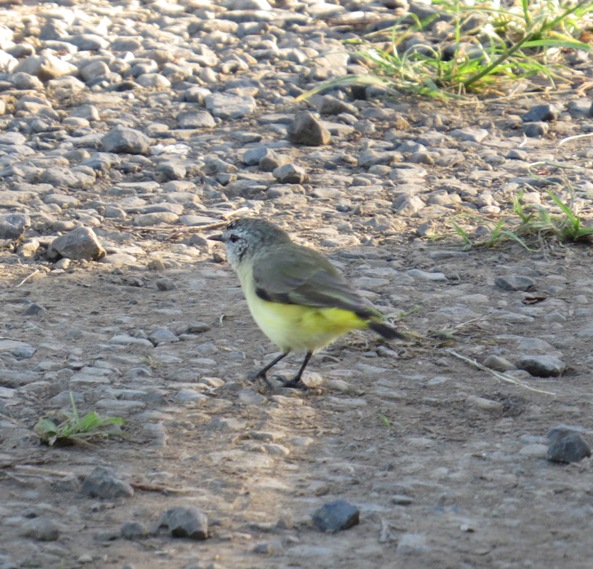s+-+Copy.jpg) |
| Yellow-rumped Thornbill at Fassifern |
From the Cunningham Highway we turned off at Gladfield and drove
to Goomburra.
 |
| Goomburra Hall |
From there, we took Inverramsay
Road and drove past the popular private campgrounds of Gordon Country and Goomburra
Valley. We continued on to Forestry Reserve Road, past the first national park
camp ground, Poplar Flat, and arrived at Manna Gum camp ground at the end of
the road.The last 6 km could get very
sticky in wet weather.
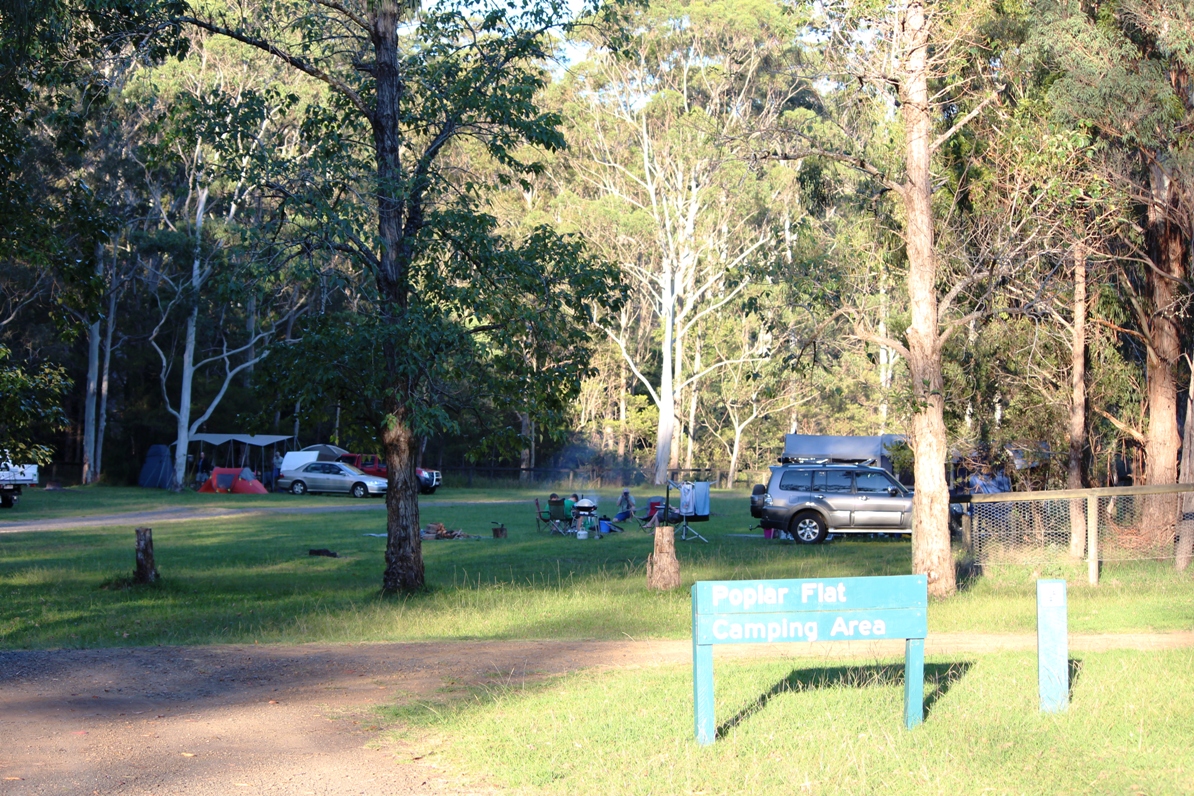s.jpg) |
| Poplar Flat Camping Area |
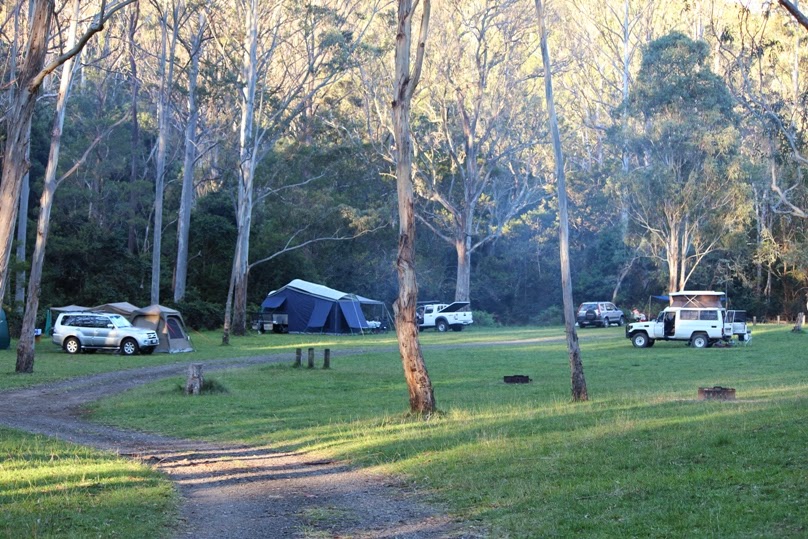.JPG) |
| Manna Gum Camping Area |
The Manna Gum camping area is fairly large with many fire rings (BYO wood) and several taps with clean non potable water. There are well maintained pit toilets and no showers. There is no phone reception. We were there in the Easter holidays and there was plenty of space available. Every day some horned cattle made their way through the
campground and around the amenities block.
.JPG) |
| Cattle in front of the amenities block. |
Bell Miners (Bell Birds) and Satin Bowerbirds are common in
the campground.
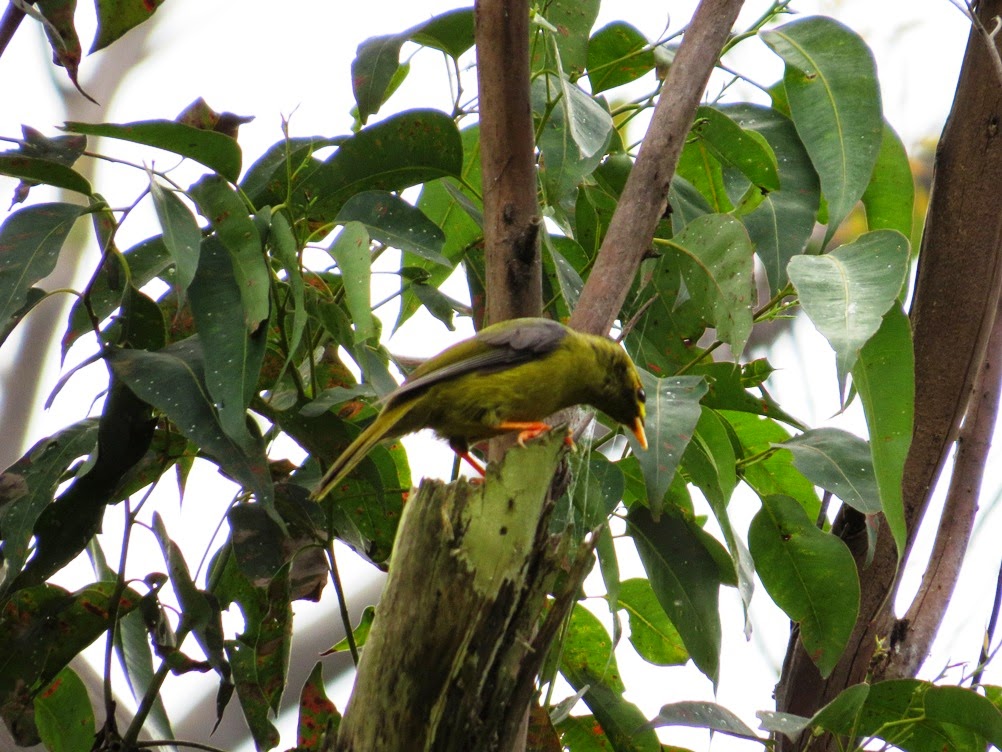.JPG) |
| Bell Miner |
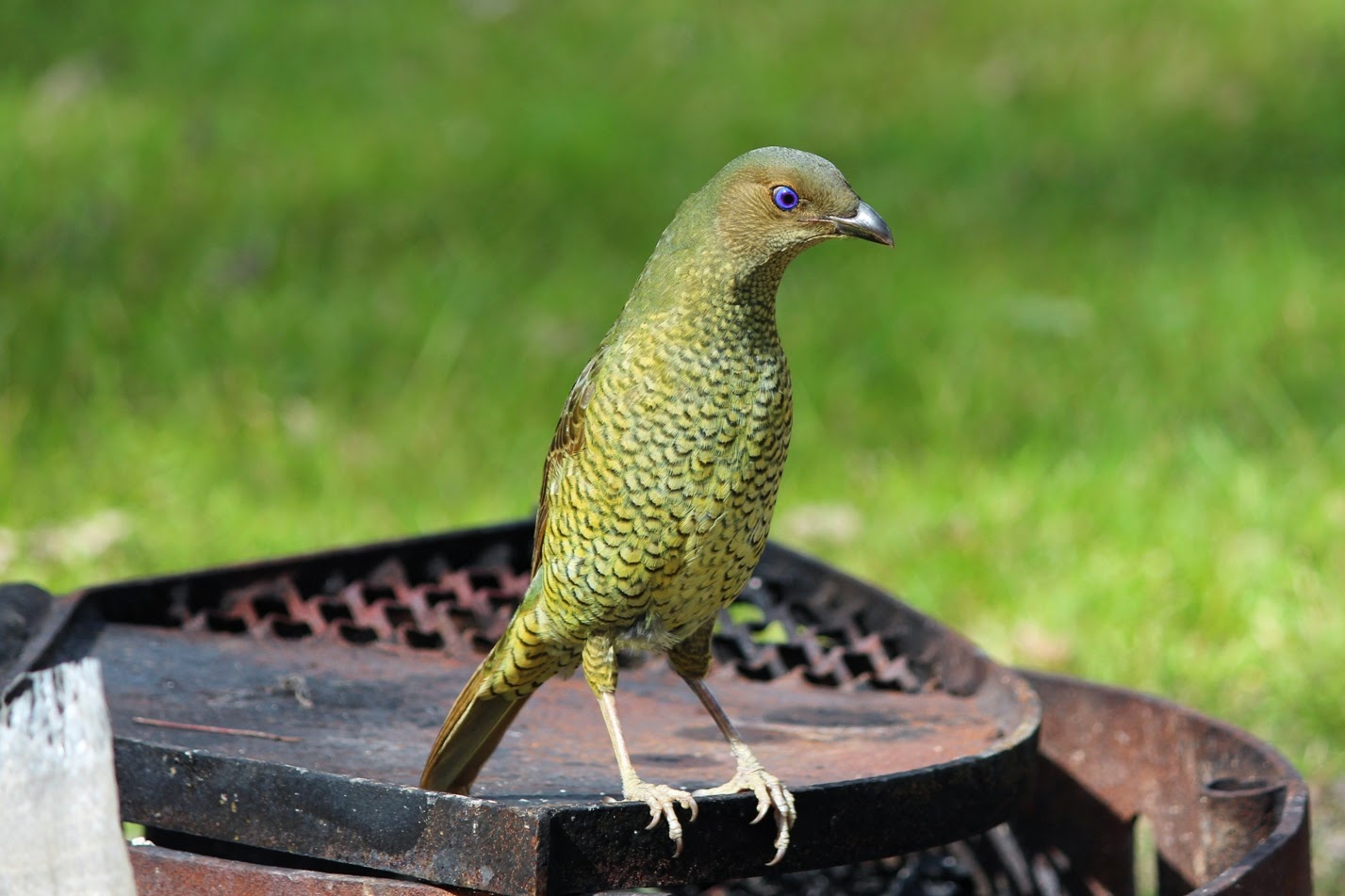.JPG) |
| Female Satin Bowerbird |
Young Bowerbirds look, for all intents and purposes, just
like female Bowerbirds. However, from their fourth year males start to develop
black feathers. Sitting at the campsite one afternoon, we were thrilled to see
a shy young male appear.
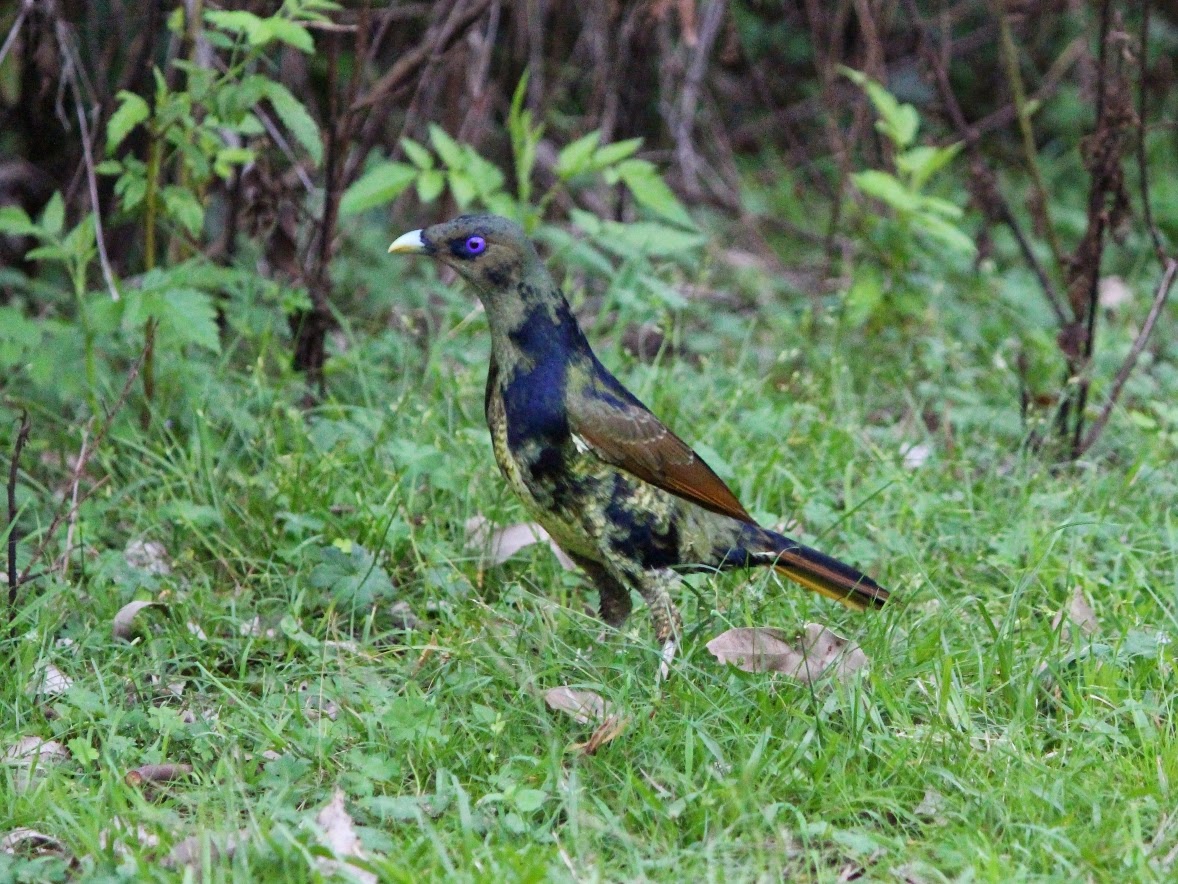.JPG) |
| Immature Male Satin Bowerbird |
By their seventh year adult males attain full glossy black
plumage.
.JPG) |
| Adult male Satin Bowerbird |
Walking Tracks
Three walking tracks start from Manna Gum campground.
Dalrymple Circuit, 1.2 km. A pleasant Class 3 loop walk.
.JPG)
Wildlife
encountered on the Dalrymple Circuit
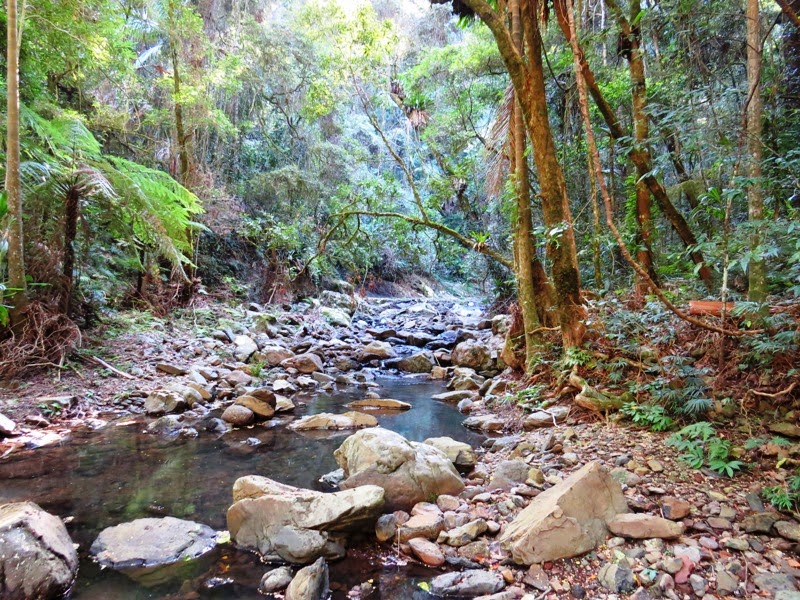.JPG) |
| Dalrymple Creek |
Cascades Circuit, 6.5 km.
We hadn’t realised that this Class
4 walk involved crossing Dalrymple Creek several times. I didn’t count them at
the time but I estimate that there were at least 15 crossings. As we walked the
track anti-clockwise we ended up doing the crossings at the end of the walk.
Next time we would do the walk clockwise so as to enjoy the crossings more.
.JPG) |
| Cascade Falls |
The walk started well with sightings of a pair of Glossy
Black-Cockatoos feeding on sheoak nuts.
.JPG) |
| Glossy Black-Cockatoo |
It took a little extra time to negotiate a large tree that
had fallen over the track.
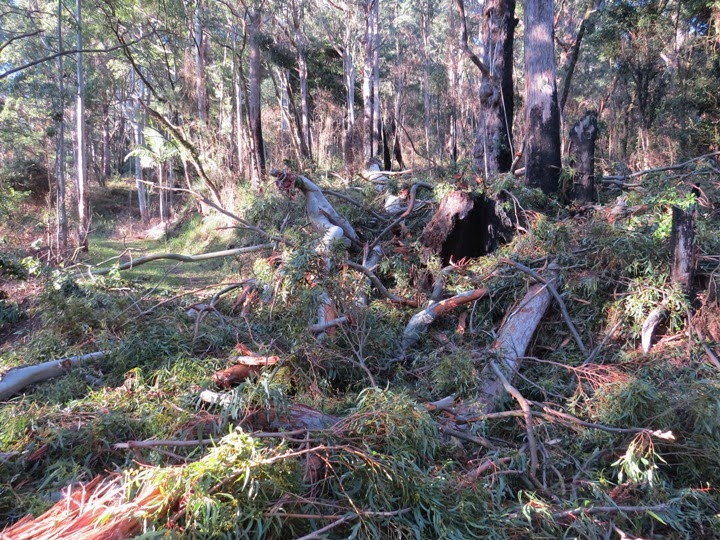.JPG) |
| Fallen tree on the Cascades Circuit |
There was a loud whirring noise in the tree canopy as a huge
flock of Topknot Pigeons moved from tree to tree to feed.
.JPG) |
| Topknot Pigeon |
A small black snake was spotted sunning itself on a river
rock as we negotiated the many crossings of Dalrymple Creek before returning to
our campsite.
Ridge Track, 5 km.
It is best to tackle this Class 4 walk
anti-clockwise and climb up the ridge first. The initial climb is very steep
with slippery shale underfoot. I would not like to try coming down on such a
slippery surface. One of the main reasons for climbing up here is to see the
great views from above, however, the higher we climbed the mistier it got as we
ascended into the clouds.
s.jpg) |
| Misty morning on the Ridge Track |
We
found this early morning walk quite magical and as we had hoped it was the
perfect stage to encounter Albert’s Lyrebirds. We saw three Albert’s Lyrebirds and
heard another one nearby. As it was quite dark in the forest our camera
struggled a bit with the light.
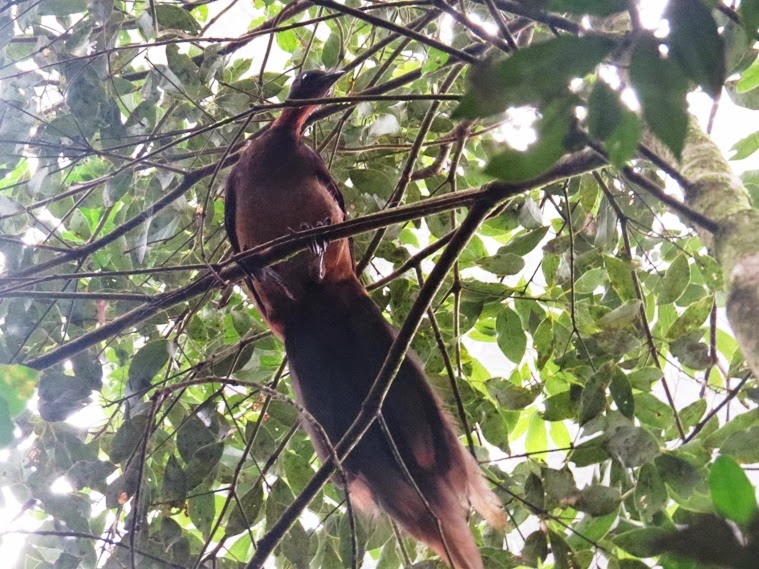s+Albert's+Lyrebird.jpg) |
| Albert's Lyrebird |
As a Grey Fantail posed for a photo a beautiful male
Mistletoebird briefly landed in a bush next to it but I missed the shot.
.JPG) |
| Grey Fantail |
The Start of the Ridge Track is challenging but seeing the lyrebirds made us feel like intrepid explorers and we came back to camp elated.
Furthermore
An interesting couple from Alaska were the only other people out walking on the trails. They vacation in Australia every Alaskan winter. They were
very well informed about Australian birds and wildlife and we had an
informative chat.
We didn’t see much on our night walks and were particularly
disappointed not to see any frogs as Goomburra is a special area for Fleay’s
barred frog.
We found it interesting that the family next to us were on a
guided camping trip. The guide showed them how to erect a tent, did all the
cooking and took them out during the day.
We would like to come back to Goomburra and walk the North
Branch track which starts near Poplar Flat camp ground. There is also a 4X4
road to the Araucarta Falls track, Sylvesters lookout and Mount Castle lookout to explore.
On the way home, we had a quick stop for lunch at Brisbane
Botanic Gardens, Mount Coot-tha.
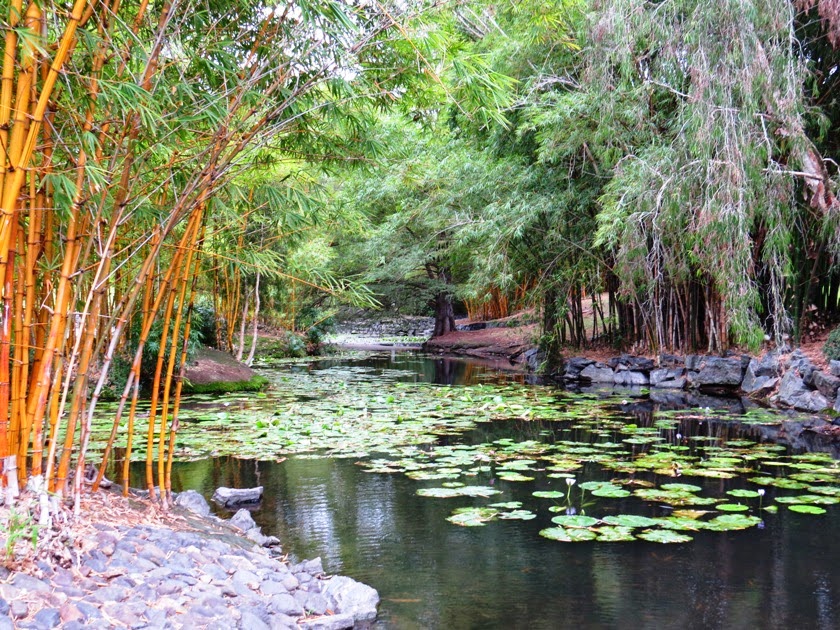.JPG) |
| Brisbane Botanic Garden, Mount Coot-tha |
.jpg)
s+-+Copy.jpg)
s.jpg)
s.jpg)
s+Albert's+Lyrebird.jpg)